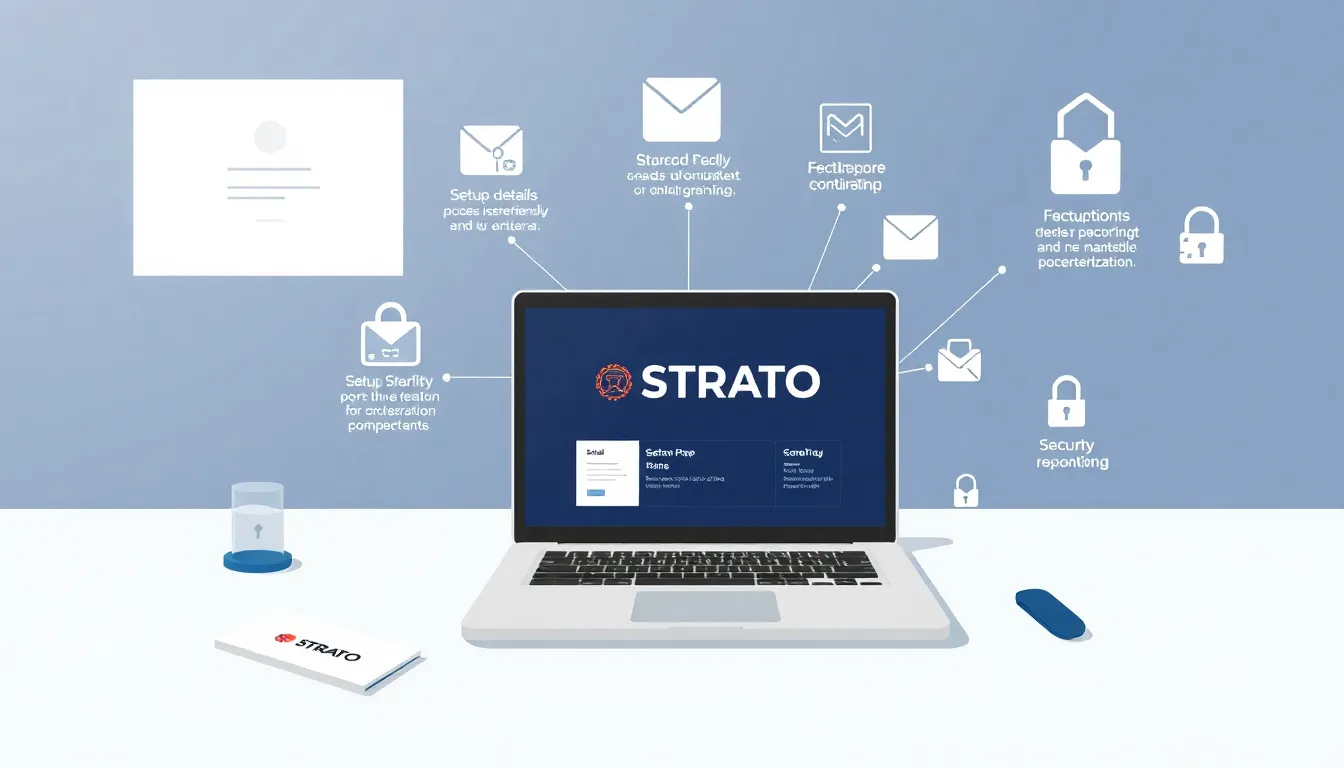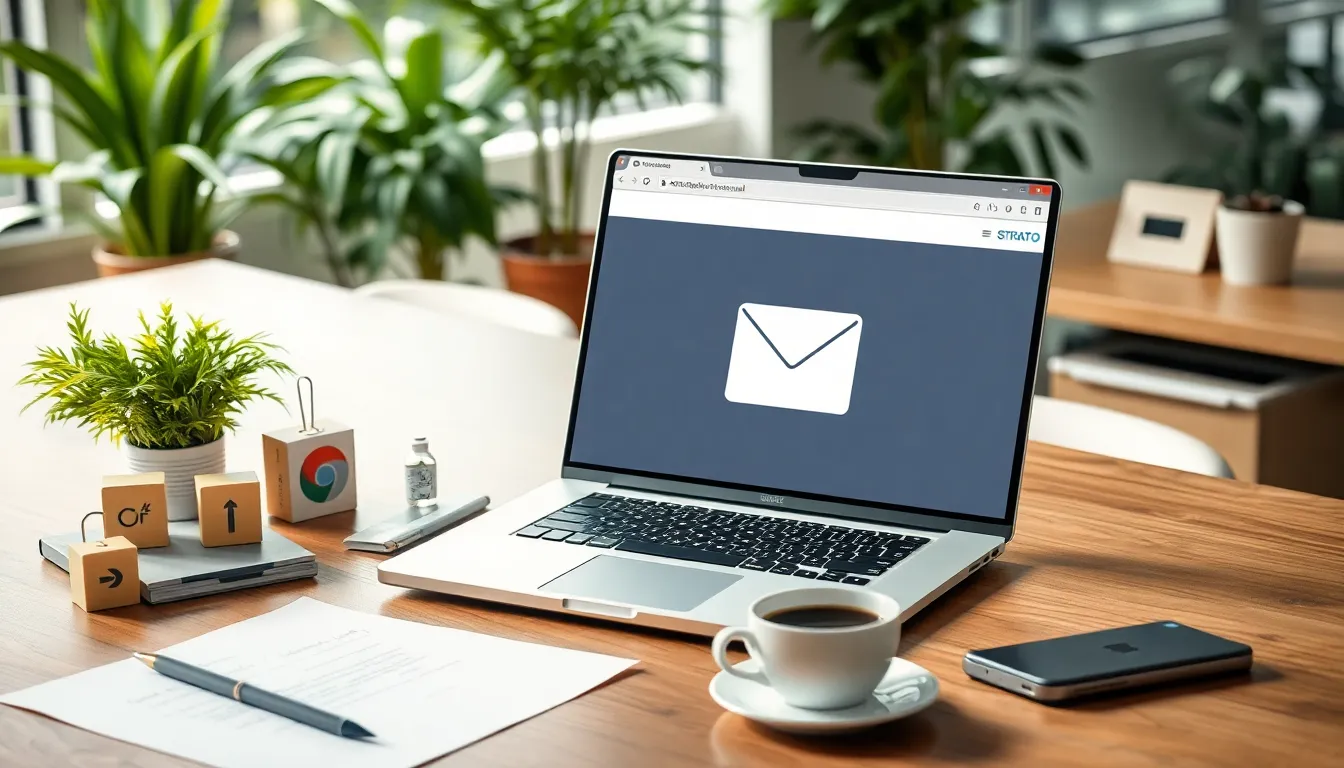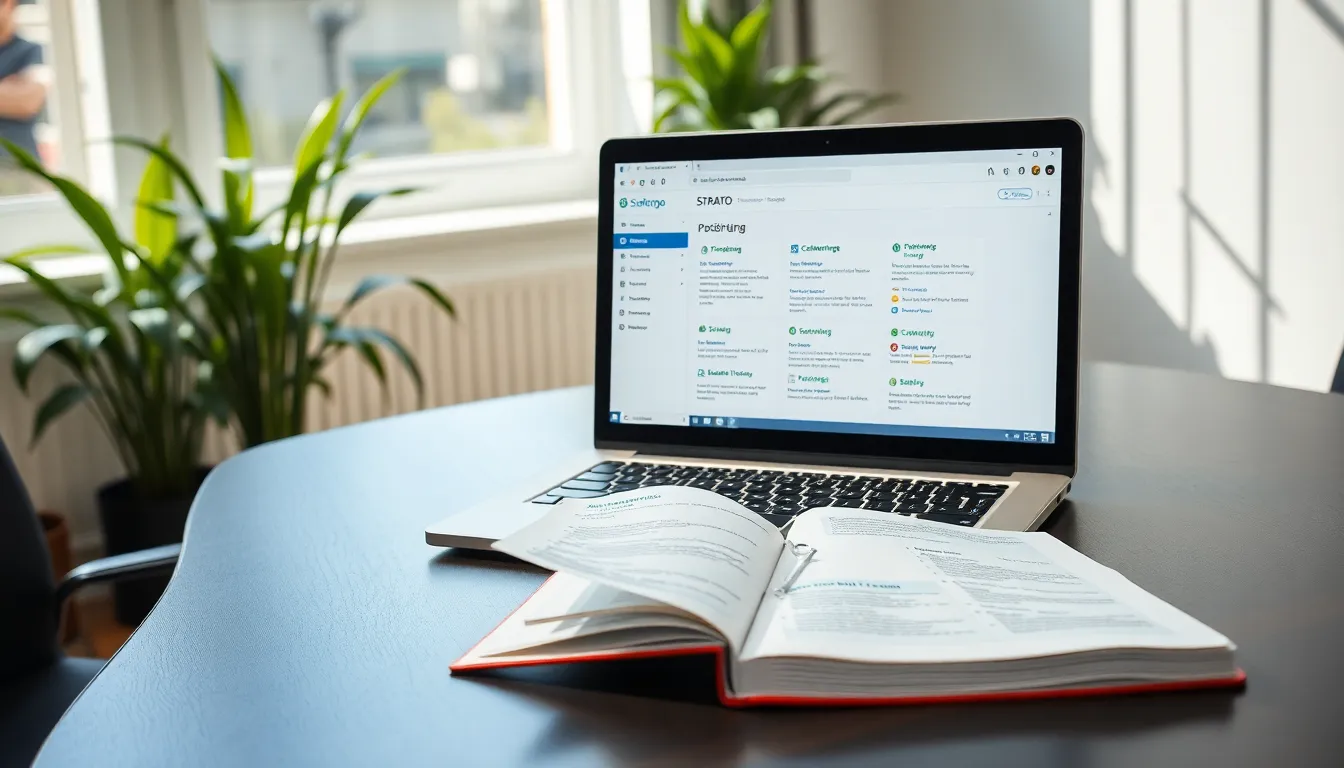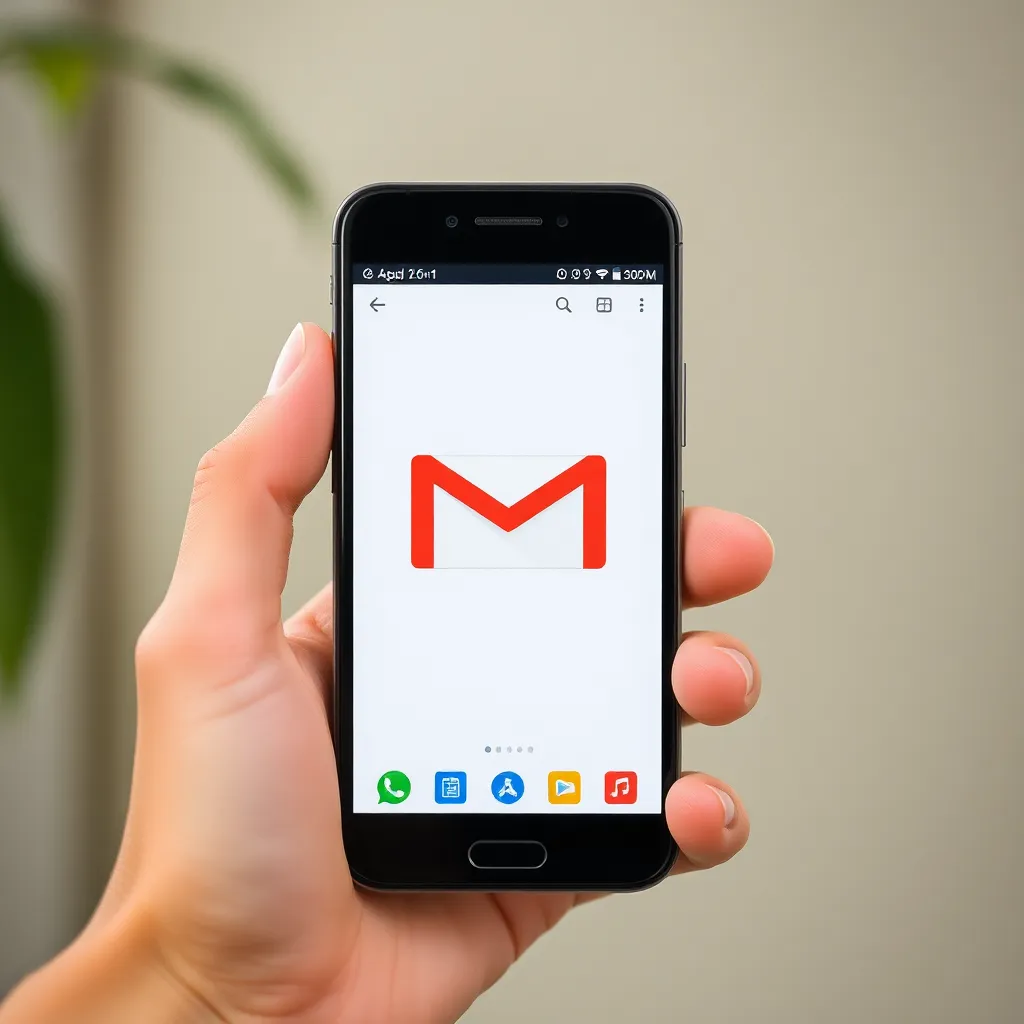STRATO Webmail offers a browser-based email solution with a focus on security, user-friendliness and integration. In this guide, I will show you how to set up STRATO Webmail, which functionalities are available and how to effectively secure your email communication.
Key points
- Simple setup via the STRATO customer menu
- SSL/TLS encryption for maximum safety
- IMAP/POP3/SMTP support for external programs
- 25 GB storage space per mailbox (depending on tariff)
- GDPR-compliant data storage in German data centers

What is STRATO Webmail?
STRATO Webmail is a web-based communication tool for managing e-mails via any standard browser. This means that I don't need any special software, but can log in directly via webmail.strato.de to read, write and organize my e-mails. STRATO integrates the webmail system into its hosting offer so that functions such as domains, calendars and storage space are directly connected. The platform is mobile-friendly and easy to read even on smaller displays.I particularly like the fact that this webmail system is very intuitive. Even if I have little experience with email administration, I quickly find my way around. Everything is accessible in the browser, which gives me flexibility: I don't have to make complicated settings on each device. Whether I'm in the office, at home or on the move - my emails are always available. The responsive approach also helps me to have everything clearly under control on smartphones or tablets.
Setting up STRATO Webmail - how it works
I create my own mailbox in the customer area of my STRATO account. It only takes a few minutes:- Login to strato.de
- Switch to the "Manage e-mail" menu item
- Create "New e-mail inbox"
- Select e-mail address, set password
- Save confirmation - done

After creating the mailbox, it's worth doing a quick check of the basic settings. For example, I check directly whether my name is displayed correctly as the sender or whether I want to add a signature. I also make sure to change my password from time to time to keep security high. All of this can be done with just a few clicks in the customer area.
Functions and possibilities in everyday life
STRATO Webmail not only supports text messages, but also a range of digital management options. For example, I can:- Save appointments in the integrated calendar - Manage contacts centrally - Create folders for a better overview - Define filter rules for automatic sortingI particularly like the function for E-mail forwarding. This allows me to automatically forward messages to other addresses or use Aliasesto operate various functions of my main address.For me, creating folders and filters is very important in order to keep work and private emails cleanly separate. For example, I can directly create filters that automatically move emails from certain senders to folder X or color-code emails with certain subject lines. This saves me a lot of time in my daily mailbox checks. I also have everything in one place with the calendar function: scheduling, contact management and e-mail. This ensures a structured working day.
Storage space and file sizes
STRATO Webmail offers enough space - up to 25 GB in many tariffs. This is enough even for high mail volumes. The system accepts attachments of up to 50 MB per message. A clear table summarizes the most important limits:| Mail function | Limit |
|---|---|
| Storage space per mailbox | Up to 25 GB |
| Max. Attachment size | 50 MB |
| Aliases per mailbox | Up to 5 |
| Webmail access | At any time via browser |
Especially when I send or receive a lot of attachments, the generous memory is an advantage. I don't have to constantly delete old emails to free up space. For larger files, however, I make sure I use a secure cloud service or send several emails in succession if someone might have problems downloading large attachments. The 25 GB is more than enough for most requirements.

Actively use security functions
Data protection at STRATO is mandatory - not voluntary. SSL/TLS encryption protects the entire data transfer. In addition there is a Spam and virus filterwhich I can configure flexibly. The Two-factor authentication (2FA) provides additional security: I activate it in the customer area and receive a one-time code every time I log in.I personally attach great importance to a secure login. Issues such as phishing and Trojans are particularly widespread these days. The 2FA gives me an additional layer of security. Even if someone gets hold of my password, they can't access my emails without the second factor token. The spam filter can also be set so that I never lose too many legitimate emails, but at the same time unwanted messages are filtered out. I also rely on my local antivirus program for virus scanning, but a server-side solution as a first hurdle is always helpful.
Another advantage is the exclusive Data processing in German data centers - fully GDPR-compliant. If you would like to take a closer look at the topic of email server hardening, you can find more information in this Guide to secure mail server settings in-depth tips.Integration in desktop programs & clients
I can also use STRATO Webmail conveniently with programs such as Outlook or Apple Mail. The IMAP, POP3 and SMTP protocols are available for this purpose. The corresponding server data looks like this:| Protocol | Server | Port | Encryption |
|---|---|---|---|
| IMAP | imap.strato.de | 993 | SSL/TLS |
| POP3 | pop3.strato.de | 995 | SSL/TLS |
| SMTP | smtp.strato.de | 465 | SSL/TLS |
The difference between IMAP and POP3 is quite important in practice: If I want to keep my emails synchronized on different devices (which is now standard for me), I should use IMAP. All actions - whether reading, deleting or moving to folders - are then synchronized with the server. With POP3, on the other hand, emails are usually only retrieved and stored locally, which can lead to inconsistencies if I use several end devices. SMTP is the protocol responsible for sending outgoing emails. With these settings, I can integrate my STRATO address into almost any standard mail client.

Mobile use & cross-platform access
STRATO Webmail has been designed so that access via smartphones, tablets or laptops works effortlessly. The Browser version adapts dynamically to the device. This means I always have an overview of messages, attachments and appointments - even when I'm on the move. For users of Plesk web servers and e-mail accounts the setup also remains compatible and easy to implement.Nowadays, mobile working has become indispensable for many people. I find it very convenient, for example, to sit in a café, log in via the browser and manage my STRATO mailboxes. As the interface is roughly the same as on the desktop, I don't have to spend a long time getting to grips with a new app. Of course, I can also integrate my accounts on iOS and Android via IMAP if I prefer to use a native mail app. This way, I remain flexible at all times and can decide spontaneously which variant I prefer.
Useful settings for more productive work
I regularly set up automatic rules to distribute incoming emails directly to the appropriate folders. I also activate the automatic saving of contacts to keep my calendar and address book up to date. If you correspond a lot, you should definitely work with color tags for folders and messages - this promotes clarity when your inbox is full.
I also like to use an out-of-office message (auto-responder) when I'm on vacation: senders automatically receive a message telling them when I'm unavailable. STRATO Webmail makes it easy for me to set up such a message in the customer area or in the mail settings. The option to manage multiple signatures can also be useful. For example, I create a more formal signature for business correspondence and a more private version for friends and family.
Working with multiple domains and mailboxes
If I manage several domains with STRATO, I like to split them up into different email accounts or work with aliases. For example, I can create a separate main address for each domain and at the same time use forwarding to bundle emails to a central account. This is practical if I have a business and a private domain but want to keep an overview in a single place. The alias function in particular is a huge relief if I use different email addresses but don't want to constantly jump back and forth between different accounts.
Optimal spam filter settings
STRATO's spam and virus filter is already well pre-configured, but I still adapt it to my preferences. For example, I create whitelists so that newsletters that I really want to read don't suddenly end up in spam. Conversely, I put controversial senders on a blacklist. I can view and change these lists in the customer area. There are also advanced options, such as automatically deleting spam emails after a certain time or redirecting them to a separate spam folder. If you want to set the filter particularly strictly, you should check the spam folders regularly so that you don't lose any important messages.
Archiving and long-term organization
Especially when I communicate a lot at work, I think about archiving emails. STRATO Webmail supports me in this by allowing me to create my own folders in which I can store old correspondence in a structured way. I can also use e-mail clients such as Outlook or Thunderbird to define automatic archiving rules that take effect locally or on the server. This means I don't have to manually filter and move old emails, but do it automatically at a predefined cycle. This keeps things tidy without me having to think about too many individual steps in my daily work.
Troubleshooting tips
Sometimes it happens that the login at webmail.strato.de does not work or mails cannot be sent. In such cases, I first check the access data and whether any two-factor authentication is set up correctly. Deleting the browser cache also sometimes helps if an older session has "hung up". If problems occur when sending emails, I take a look at the SMTP settings. It is important that the correct port (465) and the correct encryption (SSL/TLS) are activated. If an error should still occur, STRATO support can help quickly and uncover any configuration errors.
Answers to frequently asked questions
I have often heard the same questions from users:Change password? - Call up "E-mail settings" in the customer menu and save the new password under mailbox options.Manage multiple addresses? - Depending on the tariff, multiple mailboxes and forwarding are possible without any problems.How do I deal with spam? - Check the filter settings in the webmail area and mark senders as wanted or unwanted.Forgetting the password can also be a common stumbling block. In this case, I reset the password in the STRATO customer area. Then I just have to make sure to update the connection in my mail clients with the new password as well. If I receive a security warning, I should check the SSL certificate details. It can happen that certificates have expired or that my browser has old certificates in its cache. In this case, it is worth checking any security exceptions in the settings and deleting them if necessary.
Summarized: Who needs STRATO Webmail?
I recommend STRATO Webmail to anyone who wants a simple but powerful e-mail solution - without installation, with strong data security and a wide range of functions. Regardless of whether I am self-employed or manage e-mail addresses for a team - STRATO offers me a reliable partner.
Further recommendations for everyday practice
If you use STRATO Webmail regularly and also want efficient organization, you should get into the habit of following a few routines. For example, I check my inbox at a fixed time in the morning and answer important emails straight away. Thanks to the filter rules, I only end up with the really relevant emails. I then check my emails again at two or three fixed times a day - this way I avoid constant interruptions to my work. I notice that this time management has a positive effect on my productivity.
With STRATO Webmail, I can also define signatures for each of my identities or aliases in the settings. This is particularly useful if I use different sender names for different roles or projects. This gives me full flexibility and professionalism without having to log out and log back in every time. I can also give my customers or partners a suitable signature with contact details, a link to the website or a brief note on data protection issues.
Another valuable tip is to regularly empty the trash folder and the spam folder. These mails often count towards memory consumption. So if I want to save storage space and make sure I don't store any unnecessary data, it's worth taking a quick look at these folders. It is just as important to back up emails locally if necessary, especially when it comes to contracts, invoices or other important documents.
Teamwork and shared calendars
STRATO Webmail is also suitable for smaller teams, as I can share calendars and address books with each other if the corresponding functions or tariffs are activated. If I prefer this collaborative approach, it's worth taking a look at the settings. There I can define access rights and determine whether other team members are allowed to view or edit appointments. Especially for small companies or projects, this is a solid solution for coordinating tasks and keeping track of deadlines.
A dedicated collaboration tool may be more suitable for more intensive team or project management, but a shared STRATO calendar can bring a lot of added value for quick everyday use. For example, I know who is currently on vacation or in a meeting without having to ask for a long time. The out-of-office notification function completes the whole thing: if someone is unavailable at a certain address for a longer period of time, we automatically start a forwarding or send an info e-mail back to the sender.
Customized design and user interface
Although the default design of STRATO Webmail is quite tidy, I have the option of selecting a theme in the settings menu or partially customizing the layout. For example, I can specify whether the folder list on the left should be displayed in a large or compact format, whether I want to see a preview of my emails or how sorting works by default. These adjustments may be small things, but they significantly increase convenience in everyday use.
I can also set different languages if I work in an international environment. STRATO Webmail covers a wide range of language options here. For internal use in the company, it is very practical that every user can customize their webmail individually without having to carry out complex installations. All settings are saved on the server side and move with me when I log on to another computer.
Final consideration
STRATO Webmail is a well thought-out complete solution that allows me to work professionally without additional software. The successful combination of security, range of functions and ease of use convinces private users as well as small and medium-sized companies. Thanks to IMAP and POP3 compatibility, the platform can be easily integrated into existing workflows. Calendars, contacts, filters and a generous storage limit make the tool a central administration point for my communication. If you value German data centers and GDPR compliance, STRATO is the right address for you anyway. Apart from all these functions, STRATO Webmail also helps with clarity. Centrally managed emails, automatic filters and the option to set aliases and forwarding make my everyday life easier. Even people with less technical experience can get to grips with the platform. And should any questions arise, STRATO's support or the numerous help pages provide quick answers. Ultimately, the most important thing is to make use of the numerous setting options in order to optimally adapt your e-mail traffic to your personal or business needs.



